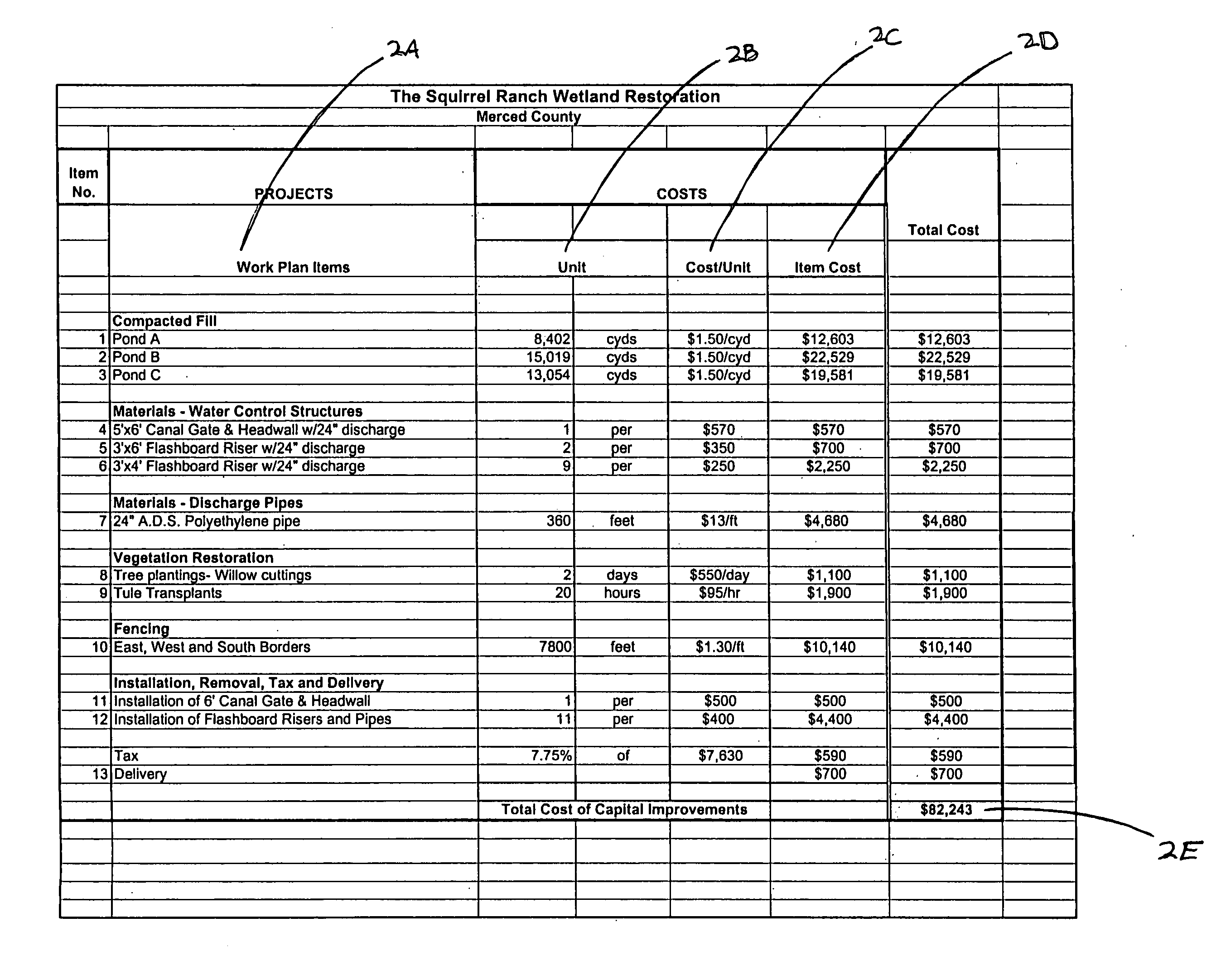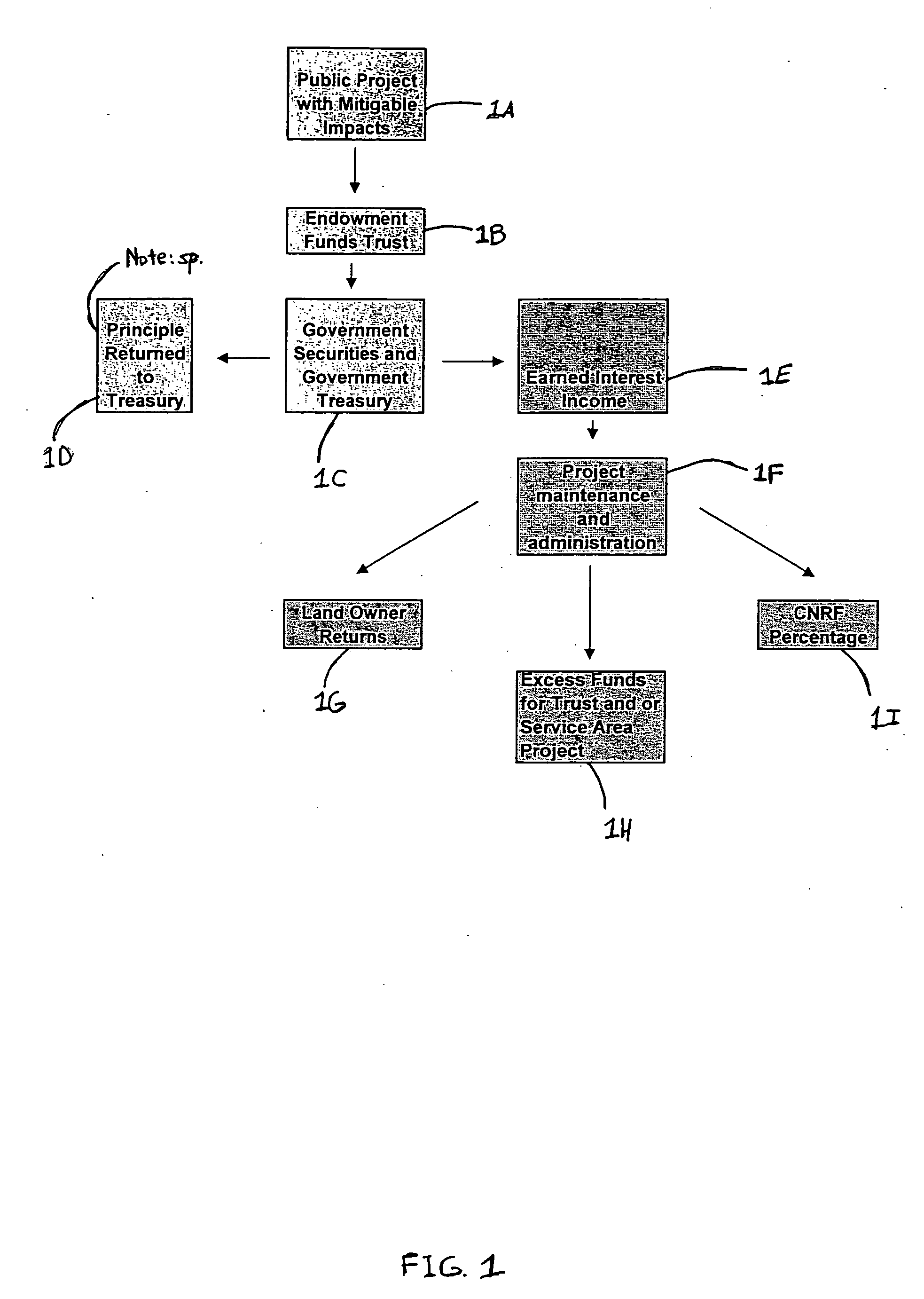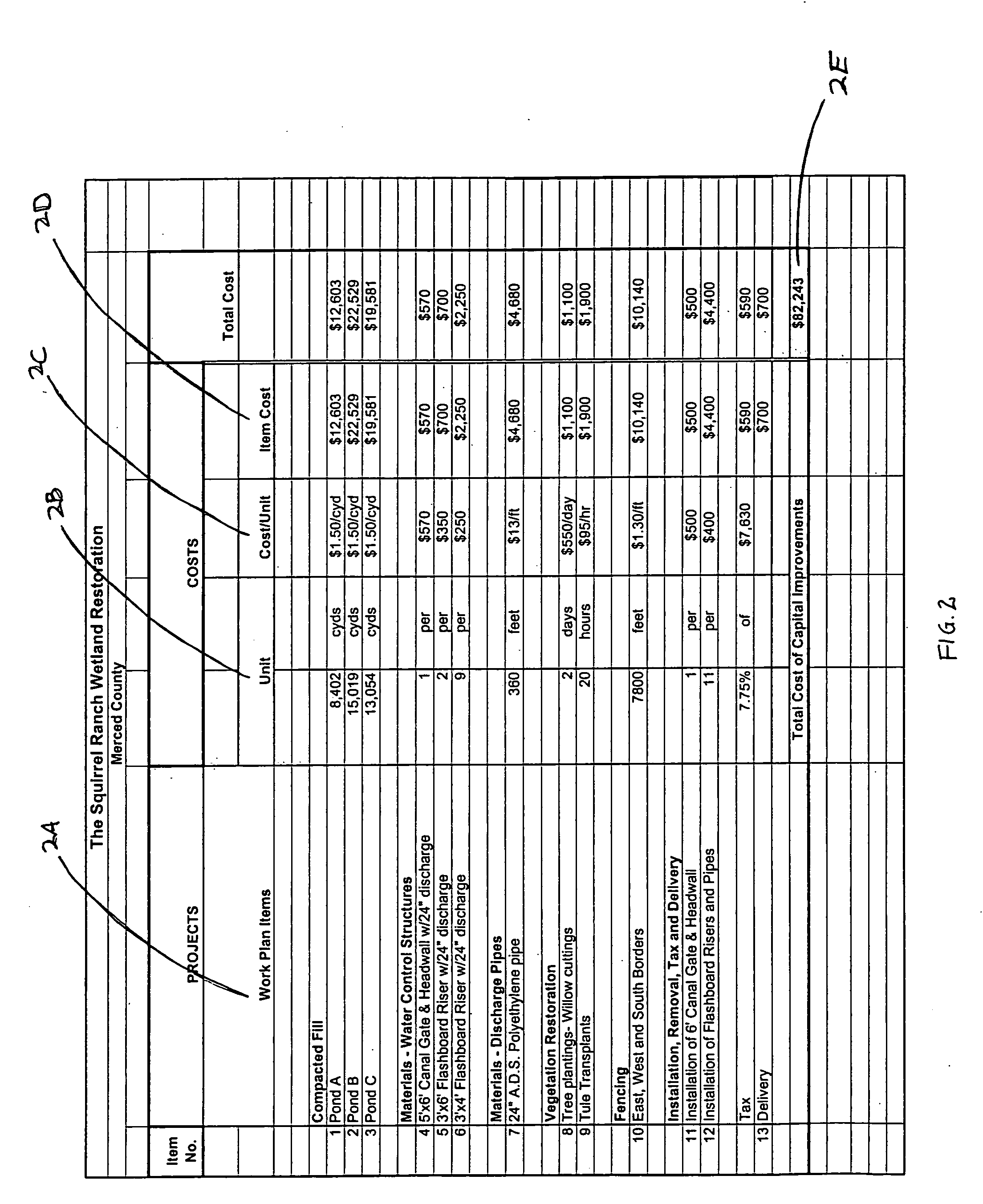Perpetual funding method for mitigating impacts on public infrastructure projects
a technology for public infrastructure and endowments, applied in finance, instruments, data processing applications, etc., can solve the problems of depleting endowments, complex and time-consuming process of developing and maintaining mitigation banks, and companies that do not carefully administer endowments, etc., to minimize the invasion and/or depletion of endowments
- Summary
- Abstract
- Description
- Claims
- Application Information
AI Technical Summary
Benefits of technology
Problems solved by technology
Method used
Image
Examples
Embodiment Construction
[0028] Referring particularly to FIG. 1, it is seen that the present invention is a method for managing endowments so as to protect them from routine depletion or invasion, and to return the endowment principal to the sponsoring government for subsequent use.
[0029] First, a public infrastructure project may be designated by state or federal statues as having mitigable environmental impacts. (Step 1A.) Such a designation requires the originating government agency to mitigate the adverse environmental impacts of the project. The particular mitigation requirement—usually a certain number of acres that must be dedicated for wildlife habitats to offset the adverse environmental effects of the project—is calculated according to any number of methods. The originating agency may retain the obligation of satisfying the requirement, or in most instances, pass the obligation along to the project contractor.
[0030] The originating agency or project contractor may retain a land banking company ...
PUM
 Login to View More
Login to View More Abstract
Description
Claims
Application Information
 Login to View More
Login to View More - R&D
- Intellectual Property
- Life Sciences
- Materials
- Tech Scout
- Unparalleled Data Quality
- Higher Quality Content
- 60% Fewer Hallucinations
Browse by: Latest US Patents, China's latest patents, Technical Efficacy Thesaurus, Application Domain, Technology Topic, Popular Technical Reports.
© 2025 PatSnap. All rights reserved.Legal|Privacy policy|Modern Slavery Act Transparency Statement|Sitemap|About US| Contact US: help@patsnap.com



